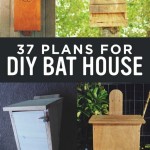Historical House Plans are blueprints or drawings that provide detailed instructions on the design, construction, and layout of historically significant homes or buildings. These plans offer valuable insights into the architectural styles, materials, and construction techniques used during different periods of history.
From medieval castles to Victorian mansions, historical house plans serve as a valuable resource for historians, architects, and homeowners alike. They assist in the restoration, preservation, and appreciation of our cultural heritage. One notable example is the restoration of Monticello, the iconic home of Thomas Jefferson. Its historical plans guided the meticulous reconstruction of the building, ensuring its authenticity and historical accuracy.
In the following sections, we will delve deeper into the significance of historical house plans, exploring their role in preserving our architectural legacy and guiding the design of new homes inspired by the past.
Historical House Plans possess significant importance, providing valuable insights into architectural history and serving as guides for preservation and design.
- Document architectural styles
- Preserve cultural heritage
- Guide restoration projects
- Inform new home designs
- Educational resource
- Inspiration for architects
- Cultural preservation
- Historical research tool
Historical House Plans contribute to the preservation and appreciation of our architectural legacy, while also inspiring the design of new homes that draw upon the rich traditions of the past.
Document architectural styles
Historical House Plans provide a comprehensive documentation of architectural styles, showcasing the distinct characteristics and elements that define each era. These plans reveal the evolution of design principles, construction techniques, and aesthetic preferences over time.
For instance, the intricate floor plans and high ceilings of Victorian mansions reflect the opulence and grandeur of the Victorian period. In contrast, the simple, functional designs of Colonial homes embody the practicality and egalitarian ideals of the American colonial era.
By studying historical house plans, architects and historians can gain a deeper understanding of the architectural vocabulary and design principles that have shaped our built environment. These plans serve as a valuable resource for identifying and preserving historically significant buildings, as well as for inspiring new designs that draw upon the rich traditions of the past.
Furthermore, historical house plans provide insights into the social and cultural values that influenced architectural styles. The elaborate ornamentation of Baroque palaces, for example, reflects the grandeur and power of the aristocracy, while the modest dwellings of ordinary citizens reveal the everyday realities of life in different periods of history.
Preserve cultural heritage
Historical House Plans play a crucial role in preserving our cultural heritage by providing a tangible link to the past. They offer valuable insights into the lifestyles, values, and traditions of our ancestors, and help us to appreciate the continuity and evolution of our built environment.
By studying historical house plans, we can learn about the materials and construction techniques used in different periods, the social and economic factors that influenced housing design, and the ways in which people lived and interacted with their homes. This knowledge is essential for understanding the cultural heritage of a region or community, and for making informed decisions about the preservation and conservation of historic buildings.
Historical House Plans also contribute to the preservation of cultural heritage by serving as a guide for restoration and rehabilitation projects. By providing detailed information about the original design and construction of a building, these plans help to ensure that renovations are carried out in a historically sensitive manner, preserving the building’s architectural integrity and historical character.
Furthermore, historical house plans can inspire new designs that are rooted in the traditions of the past. By studying the plans of historically significant buildings, architects and designers can gain a deeper understanding of the principles of good design and the ways in which historical styles can be adapted to meet the needs of contemporary living.
In conclusion, Historical House Plans are invaluable tools for preserving our cultural heritage. They provide a tangible link to the past, offer insights into the lifestyles and values of our ancestors, and guide restoration and new design projects in a historically sensitive manner.
Guide restoration projects
Historical House Plans serve as invaluable guides for restoration projects, providing detailed information about the original design and construction of a building. This information is crucial for ensuring that renovations are carried out in a historically sensitive manner, preserving the building’s architectural integrity and historical character.
Historical House Plans provide precise measurements, specifications, and details of the building’s exterior and interior features. This information enables architects and contractors to accurately recreate lost or damaged elements, such as moldings, cornices, and windows. By adhering to the original plans, restoration projects can maintain the building’s historical authenticity and preserve its significance as a cultural heritage asset.
Furthermore, Historical House Plans can reveal hidden details or structural issues that may not be readily apparent during a visual inspection. These plans can provide insights into the building’s original construction methods and materials, allowing for informed decisions about repairs and upgrades. By carefully studying the plans, architects and engineers can identify potential problems and develop appropriate solutions that respect the building’s historical integrity.
Historical House Plans also serve as a reference point for evaluating the appropriateness of proposed changes or additions to a historic building. By comparing the proposed changes to the original plans, architects and historians can assess the impact on the building’s historical character and make recommendations to ensure that any alterations are compatible with the building’s significance.
In conclusion, Historical House Plans are indispensable guides for restoration projects, providing a roadmap for preserving the architectural integrity and historical character of historic buildings. By adhering to the original plans, restoration projects can ensure that these valuable cultural assets are preserved for future generations.
Inform new home designs
Historical House Plans can serve as a rich source of inspiration for new home designs, offering timeless principles and design elements that can be adapted to contemporary living. By studying the plans of historically significant buildings, architects and designers can gain invaluable insights into the enduring qualities of good design and the ways in which historical styles can be reinterpreted to meet the needs of modern homeowners.
One of the key advantages of using Historical House Plans as inspiration for new home designs is their emphasis on livability and functionality. Historic homes were designed to be comfortable and practical, with well-proportioned rooms, natural light, and efficient use of space. These principles can be applied to new homes to create living environments that are both aesthetically pleasing and functional.
Furthermore, Historical House Plans can provide inspiration for the use of traditional materials and craftsmanship. Historic homes were often built using durable materials such as wood, brick, and stone, which have stood the test of time. By incorporating these materials into new home designs, architects can create homes that are both beautiful and long-lasting.
In addition to the practical benefits, Historical House Plans can also inspire new homes with a sense of character and charm. Historic homes often have unique architectural details, such as moldings, cornices, and fireplaces, that add visual interest and create a sense of warmth and coziness. These details can be incorporated into new home designs to create homes that are both stylish and inviting.
In conclusion, Historical House Plans are a valuable resource for architects and designers seeking inspiration for new home designs. They offer timeless principles of good design, practical functionality, and a sense of character and charm that can be adapted to meet the needs of contemporary living.
Educational resource
Historical House Plans serve as valuable educational resources for students, architects, historians, and anyone interested in the history of architecture and design. They provide a wealth of information about the evolution of architectural styles, construction techniques, and the social and cultural factors that have influenced the design of homes throughout history.
- Understanding architectural history
Historical House Plans offer a tangible connection to the past, allowing students and researchers to study the architectural styles and design principles of different historical periods. By analyzing the plans, they can gain insights into the evolution of architectural forms, the use of materials, and the influence of cultural and societal factors on building design.
- Learning construction techniques
Historical House Plans provide detailed information about the construction techniques used in different periods. Students and architects can study the plans to understand how buildings were framed, how roofs were constructed, and how various building materials were employed. This knowledge is invaluable for understanding the structural integrity and durability of historic buildings.
- Appreciating craftsmanship and design
Historical House Plans showcase the craftsmanship and design skills of past artisans and architects. By studying the plans, students and enthusiasts can appreciate the intricate details, fine joinery, and thoughtful design that went into the construction of historic homes. This appreciation can foster a greater understanding of the value of craftsmanship and the importance of preserving historic buildings.
- Inspiring creativity and innovation
Historical House Plans can inspire creativity and innovation in architecture and design. By studying the plans of historic buildings, architects and designers can gain inspiration for new design concepts and solutions. The timeless principles of good design and functionality found in historic homes can be adapted and reinterpreted to create contemporary homes that are both stylish and livable.
In conclusion, Historical House Plans are a valuable educational resource for anyone interested in the history of architecture and design. They provide insights into architectural styles, construction techniques, craftsmanship, and design principles, inspiring creativity and innovation in the field of architecture.
Inspiration for architects
Historical House Plans offer a wealth of inspiration for architects, providing insights into enduring design principles, timeless aesthetics, and innovative solutions. By studying the plans of historic buildings, architects can gain inspiration for their own designs, adapting and reinterpreting historical elements to create contemporary homes that are both stylish and livable.
- Understanding spatial relationships
Historical House Plans reveal how architects in the past created harmonious and functional living spaces. By studying the plans, contemporary architects can learn from the successful arrangement of rooms, the flow of circulation, and the relationship between interior and exterior spaces. This knowledge can inspire new designs that prioritize livability, comfort, and a sense of connection to the outdoors.
- Incorporating traditional elements
Historical House Plans showcase a wide range of traditional architectural elements, such as moldings, cornices, fireplaces, and built-in cabinetry. These elements add character and charm to historic homes, and they can be adapted and incorporated into contemporary designs to create a sense of warmth and sophistication. Architects can draw inspiration from the use of these elements to create homes that are both stylish and timeless.
- Reinterpreting historical styles
Historical House Plans provide a rich vocabulary of architectural styles to draw upon. By studying the plans of historic buildings, architects can gain inspiration for reinterpreting these styles in a contemporary context. For example, a modern home might incorporate the symmetrical facade and grand entrance of a Georgian mansion, while using updated materials and construction techniques to create a fresh and innovative design.
- Embracing sustainability
Many historic homes were built using sustainable materials and construction techniques that are still relevant today. By studying Historical House Plans, architects can learn from the use of natural materials, such as wood, stone, and brick, as well as traditional building techniques that promote energy efficiency and durability. This knowledge can inspire contemporary designs that are both environmentally friendly and respectful of the past.
In conclusion, Historical House Plans are an invaluable source of inspiration for architects, providing insights into timeless design principles, traditional elements, historical styles, and sustainable practices. By studying these plans, architects can create contemporary homes that are both stylish and livable, while also drawing upon the wisdom and creativity of the past.
Cultural preservation
Historical House Plans play a crucial role in cultural preservation by providing a tangible link to the past and offering valuable insights into the lifestyles, values, and traditions of our ancestors. They serve as a record of our collective architectural heritage and contribute to a deeper understanding of the evolution of our built environment.
- Documenting architectural heritage
Historical House Plans provide a comprehensive documentation of our architectural heritage, capturing the unique characteristics and styles that define different periods and regions. By studying these plans, we can gain insights into the influences, innovations, and cultural values that shaped the design of our buildings. This documentation is essential for understanding the evolution of architecture as an art form and a reflection of societal norms.
- Preserving cultural identity
Historical House Plans contribute to the preservation of cultural identity by providing a physical representation of the past. They embody the traditions, beliefs, and aspirations of the communities that built them. By preserving and studying these plans, we can connect with our cultural roots and gain a deeper appreciation for the diversity and richness of our heritage.
- Promoting cultural tourism
Historical House Plans can be used to promote cultural tourism, attracting visitors interested in exploring the architectural heritage of a region. By providing detailed information about historic buildings, these plans enable tourists to appreciate the craftsmanship, design, and historical significance of these structures. Cultural tourism not only generates economic benefits but also fosters a greater understanding and appreciation of our shared cultural heritage.
- Inspiring future generations
Historical House Plans can inspire future generations by showcasing the ingenuity and creativity of past architects and builders. By studying these plans, young people can develop an appreciation for the value of preserving our architectural heritage and be inspired to pursue careers in architecture, historic preservation, or related fields. This inspiration helps ensure that the skills and knowledge necessary to preserve our built environment are passed on to future generations.
In conclusion, Historical House Plans are invaluable tools for cultural preservation. They document our architectural heritage, preserve cultural identity, promote cultural tourism, and inspire future generations. By safeguarding these plans, we ensure that the legacy of our built environment is preserved for the enjoyment and education of present and future generations.
Historical research tool
Historical House Plans serve as invaluable tools for historical research, providing a wealth of information about the social, economic, and cultural conditions of the past. By examining the plans of historic buildings, researchers can gain insights into:
- Daily life and domestic practices
Historical House Plans reveal the layout and arrangement of rooms, providing insights into the daily lives and domestic practices of past occupants. The size and placement of kitchens, dining rooms, bedrooms, and other spaces can shed light on family dynamics, social customs, and patterns of everyday life.
- Building materials and construction techniques
Historical House Plans provide detailed information about the materials used in the construction of a building, as well as the techniques employed by builders. This information can contribute to our understanding of the availability of resources, the level of craftsmanship, and the technological advancements of the period.
- Social hierarchy and wealth distribution
The size and grandeur of a house can often indicate the social status and wealth of its occupants. By studying Historical House Plans, researchers can gain insights into the social hierarchy and wealth distribution of past societies.
- Cultural influences and architectural styles
Historical House Plans reflect the cultural influences and architectural styles prevalent at the time of their . By analyzing the plans, researchers can identify the design elements, decorative motifs, and architectural features that were popular in different periods and regions.
In addition to these insights, Historical House Plans can also provide valuable information for genealogical research, as they often contain the names of previous owners and occupants. This information can help researchers trace family lineages and gain a deeper understanding of their ancestors’ lives.
Overall, Historical House Plans are a rich source of historical information, offering valuable insights into the social, economic, cultural, and technological aspects of the past. By studying these plans, researchers can gain a more comprehensive understanding of the lives and times of our ancestors.









Related Posts








